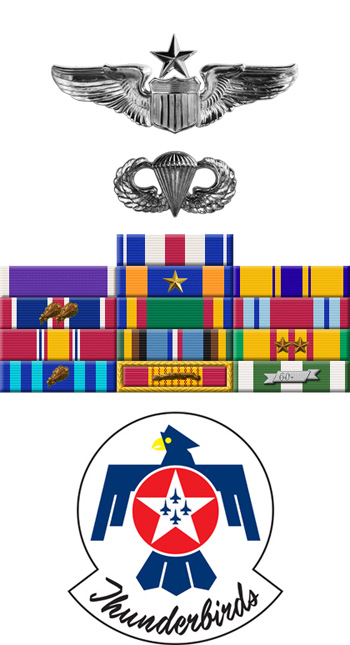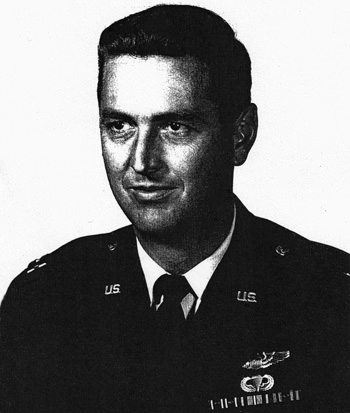
|
Russell C. Goodman |
 |
|||
| Rank, Service | ||||
Major O-4, U.S. Air Force |
||||
| Veteran of: | ||||
|
||||
| Tribute: | ||||
Russ Goodman was born on July 19, 1934, in Fairview, Utah. He was commissioned a 2d Lt through the Air Force ROTC program on December 17, 1955, and went on active duty beginning March 27, 1956. Lt Goodman completed Undergraduate Pilot Training and was awarded his pilot wings at Greenville AFB, Mississippi, in May 1957, and then completed F-100 Super Sabre Combat Crew Training at Williams AFB, Arizona, in November 1957. His first assignment was as an F-100 pilot with the 12th Fighter Bomber Squadron (redesignated the 12th Tactical Fighter Squadron in July 1958) at Kadena AB, Okinawa, from January 1958 to November 1960, and then with the 67th Tactical Fighter Squadron, also at Kadena AB, from November 1960 to April 1961. He served with the 523rd Tactical Fighter Squadron at Cannon AFB, New Mexico, from April 1961 to November 1962, followed by service as a command briefing officer with Headquarters Tactical Air Command at Langley AFB, Virginia, from December 1962 to February 1964. Capt Goodman next served as the Narrator for the Air Force Air Demonstration Squadron, the Thunderbirds, from February 1964 to December 1965. He became a Navy Exchange Officer in December 1965, and after completing F-4 Phantom II training and carrier training, he was assigned to VF-96 in June 1966, deploying to Vietnam aboard the aircraft carrier USS Enterprise (CVN-65) in November 1966. Maj Goodman was killed during a bombing mission over North Vietnam on February 20, 1967. His remains were returned to the U.S. on April 15, 2008, and were positively identified on November 16, 2009. |
||||
|
||||

